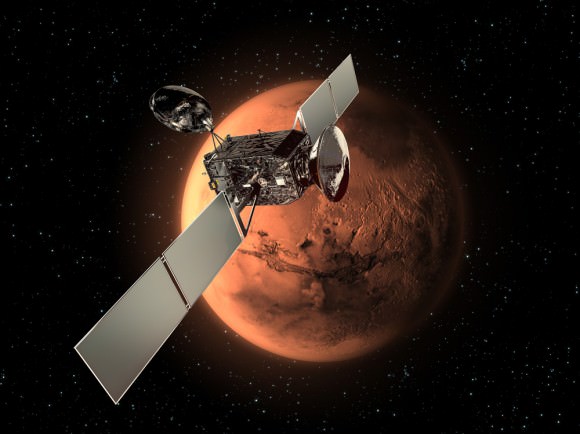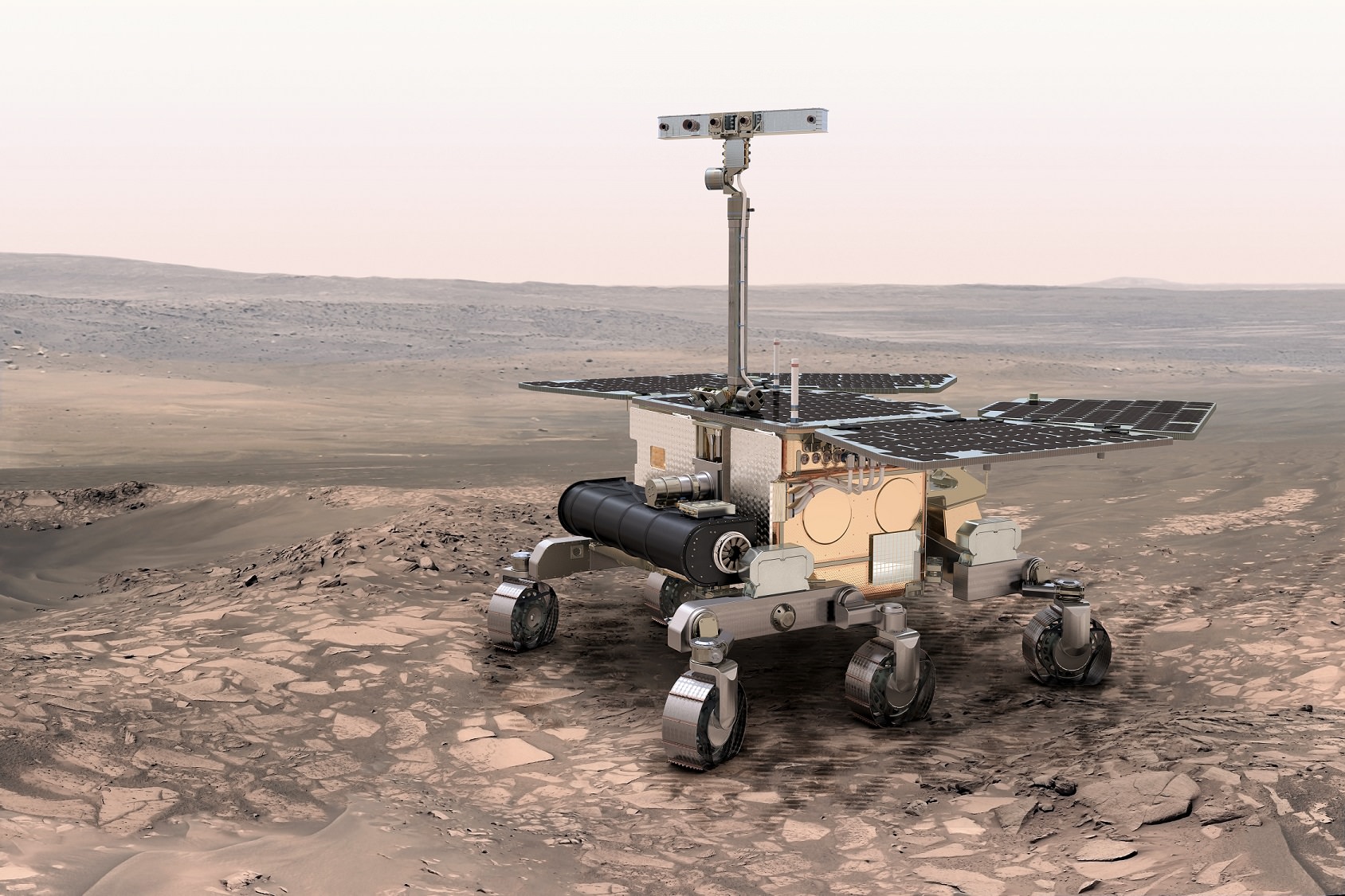Signs of life on the Martian surface would still be visible even after bacteria were zapped with a potentially fatal dose of radiation, according to new research — if life ever existed there, of course.
Using “model” bacteria expected to resemble what microbes could look like on the Red Planet, the research team used a Raman spectrometer — an instrument type that the ExoMars rover will carry in 2018 — to see how the signal from the bacteria change as they get exposed to more and more radiation.
The bottom line is the study authors believe the European Space Agency rover’s instrument would be capable of seeing bacteria on Mars — from the past or the present — if the bacteria were there in the first place.
Readings from the NASA Mars Curiosity rover recently found that humans on the surface of Mars would have a higher risk of cancer due to the increased radiation level on the surface. Mars does not have a global magnetic field to deflect radiation from solar flares, nor a thick atmosphere to shelter the surface.
The new study still found the signature of life in these model microbes at 15,000 Gray of radiation, which is thousands of times higher than the radiation dose that would kill a human. At 10 times more, or 150,000 Gray, the signature is erased.

“What we’ve been able to show is how the tell-tale signature of life is erased as the energetic radiation smashes up the cells’ molecules,” stated Lewis Dartnell, an astrobiology researcher at the University of Leicester who led the study.
Specifically, the spectrometer detected carotenoid molecules, which can be used to protect a microorganism against difficult conditions in the environment. The research teams stated that these cartenoids have been proposed as “good biosignatures of life” on Mars.

“In this study we’ve used a bacterium with unrivaled resistance to radiation as a model for the type of bacteria we might find signs of on Mars. What we want to explore now is how other signs of life might be distorted or degraded by irradiation,” Dartnell added. “This is crucial work for understanding what signs to look for to detect remnants of ancient life on Mars that has been exposed to the bombardment of cosmic radiation for very long periods of time.”
No one is sure if Mars has life right now on its surface, or ever did in the past. The Mars Curiosity rover is equipped to look at past environmental conditions on the planet, but is not designed to look for life itself.
Many scientists believe flowing water existed on the planet, though, based on rock findings from three NASA rovers and the appearance of channels, streams and perhaps even oceans as spotted by orbiting satellites. Some scientists say the atmosphere of Mars was much thicker in the past, but it then dissipated for reasons that are still being investigated. Water, however, does not necessarily point to life.
The research was presented at the European Planetary Science Congress on Monday. Universe Today has reached out to Dartnell to see if the work is peer-reviewed. His website lists several published research articles he wrote on similar topics.
Edit: Dartnell says that research was published in Analytical and Bioanalytical Chemistry in 2012, and you can read the paper here.
Source: European Planetary Science Congress


I wonder if any Earthly bacteria that managed to make it to Mars aboard the spacecraft we’ve sent managed to survive after sterilization and enduring the localised surface conditions there. I wonder if they’d fare better where water ice can be found at the edge of the poles or deep in some craters? Some Earth bacteria are now known to thrive at the low atmospheric pressure found on Mars and some others can grow within ice itself. Could bacteria be carried aloft into the Martian atmosphere by winds to be seeded elsewhere?
It seems from growth experiments that Earth spores that make it and could wake would then be sterilized by the UV radiation at the surface before they spread further.
From Viking, before Phoenix and especially Curiosity I would say that people thought one would have to dig deep to reach non-sterilized conditions.
However, Curiosity has revealed that the oxidants have surprisingly little reach into the rocks, and that local patches of oxidized and reduced material occurs. (Hinting not only at survivable conditions but conditions with redox potentials – energy sources for subsurface bacteria.)
Still, I would expect that the expectations for any remaining large volumes of habitability would be between the permafrost layers and the crust, in the melt regions or even perhaps an underlying water table. Insight 2016 may provide some insight into the deep crustal conditions and any global heat sources (active core).
If you want a global spreading mechanism for subsurface life apart from the usual diffusion of life, how would the incessant flow of crust blasted every which way by martian impactors grab you? Local transpermia, as it were.
Your insight enlightens me, thank you!
That’s going to undoubtedly be one of the experiments done by future Mars astronauts when they move the landers to Martian museums. A careful swabbing of each lander to see if any life survived the primitive clean rooms of the 1970’s, 1990’s and 2000’s.
Hellas Planitia is the place to look for life! The low elevation means organisms would have that much more atmosphere to help protect from the rads, it will be warmer and BONUS as an impact crater remnant it may have a sufficiently shattered crust to allow volcanic ‘hot spots’ close to the surface? Perhaps with temps high enough to melt ice and create a liquid aquifer? THAT’s where I would look for life today on Mars = my 2 cents.
There already existing frozen water ice above on the surface there having been once more, if water flows down with gravity and if Mars never totally froze for all time, gravity makes water travel down underground. Chances are there are indeed aquifers.
Takes me back to the question that if Mars once had flowing water on its surface, despite it being further away from the Sun than Earth therefore cooler, did it once have a runaway greenhouse affected atmosphere?
Thanks for digging into the status of this work! It will be interesting to see if and when it comes out of peer review.
Carotenoids are quite complex terpenoids. But they mitigate near UV damage and bacteria can make them, so it is plausible they would evolve.
I’m a bit at a loss to why the usual long-lived polymers that appears nearly everywhere like cellulose wouldn’t be the winners. (Even we produce some, maybe explaining Mr Potato Head.)
This is the rover we should have sent. I hope it is successful.